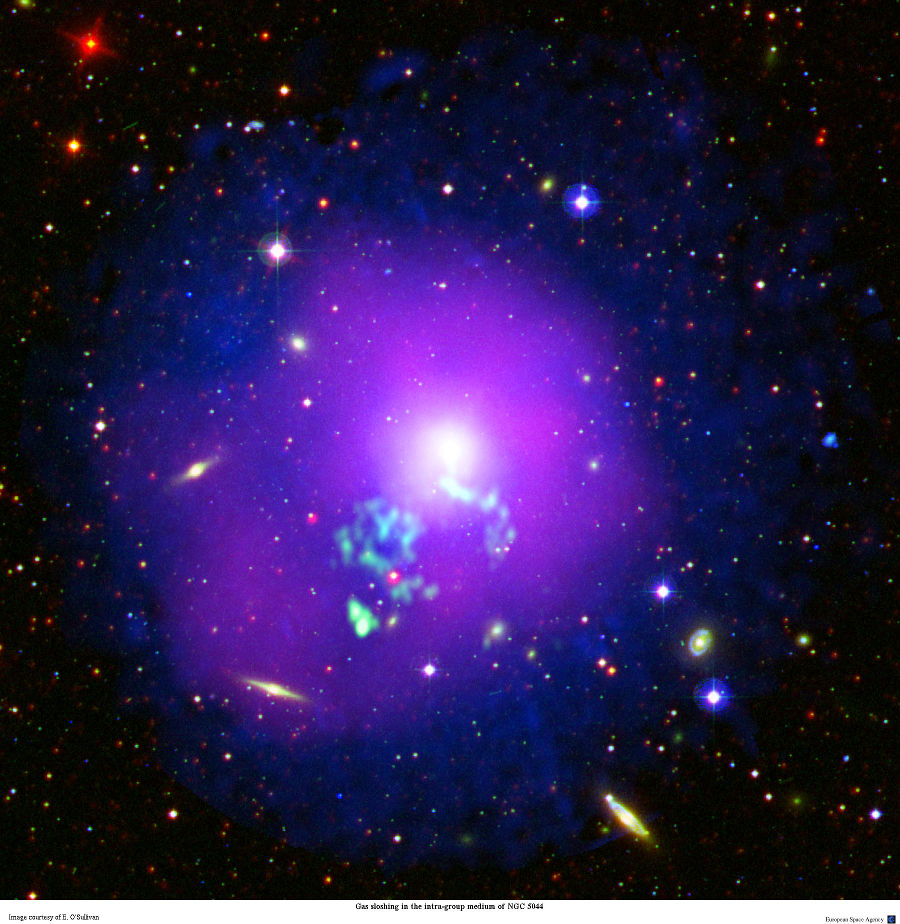
 Credit: E. O'Sullivan and ESA
Credit: E. O'Sullivan and ESA
Ironing
The chemical evolution of the Universe is a necessity for the growth of complex structures like living creatures in all their wondrous variety. Astronomers characterize the chemical evolution of the Universe by the abundance of iron, since iron is the end-product of stellar thermonuclear processing. Massive stars cook up iron deep in their interiors, then explode, distributing iron-rich material into interstellar space (and even beyond the confines of the star's galaxy). Collisions between galaxies can strip out the iron-rich interstellar gas, increasing the abundance of iron far and wide through intergalactic space. The image above is a multi-wavelength view of the NGC 5044 galaxy cluster from radio, through optical to X-rays. The large purple emission around the cluster shows X-ray emission from iron atoms as measured by the XMM-Newton X-ray observatory. X-ray observations are useful since most of the normal matter (as opposed to dark matter) of this cluster (or any cluster of galaxies) is in the form of hot, X-ray emitting intracluster gas, and this hot gas provides an efficient way to measure the amount of X-ray emission produced by individual chemical elements, including iron. These XMM-Newton observations show that the "sloshing" motion of the gravitationally-bound gas in the cluster provides an important mechanism to distribute iron throughout the intracluster gas.
Published: October 21, 2013
<
HEA Dictionary ● Archive
● Search HEAPOW
● Other Languages
● HEAPOW on Facebook
● Download all Images
● Education ● HEAD
>

Each week the HEASARC
brings you new, exciting and beautiful images from X-ray and Gamma ray
astronomy. Check back each week and be sure to check out the HEAPOW archive!
Page Author: Dr. Michael F. Corcoran
Last modified Monday, 26-Feb-2024 17:35:51 EST


